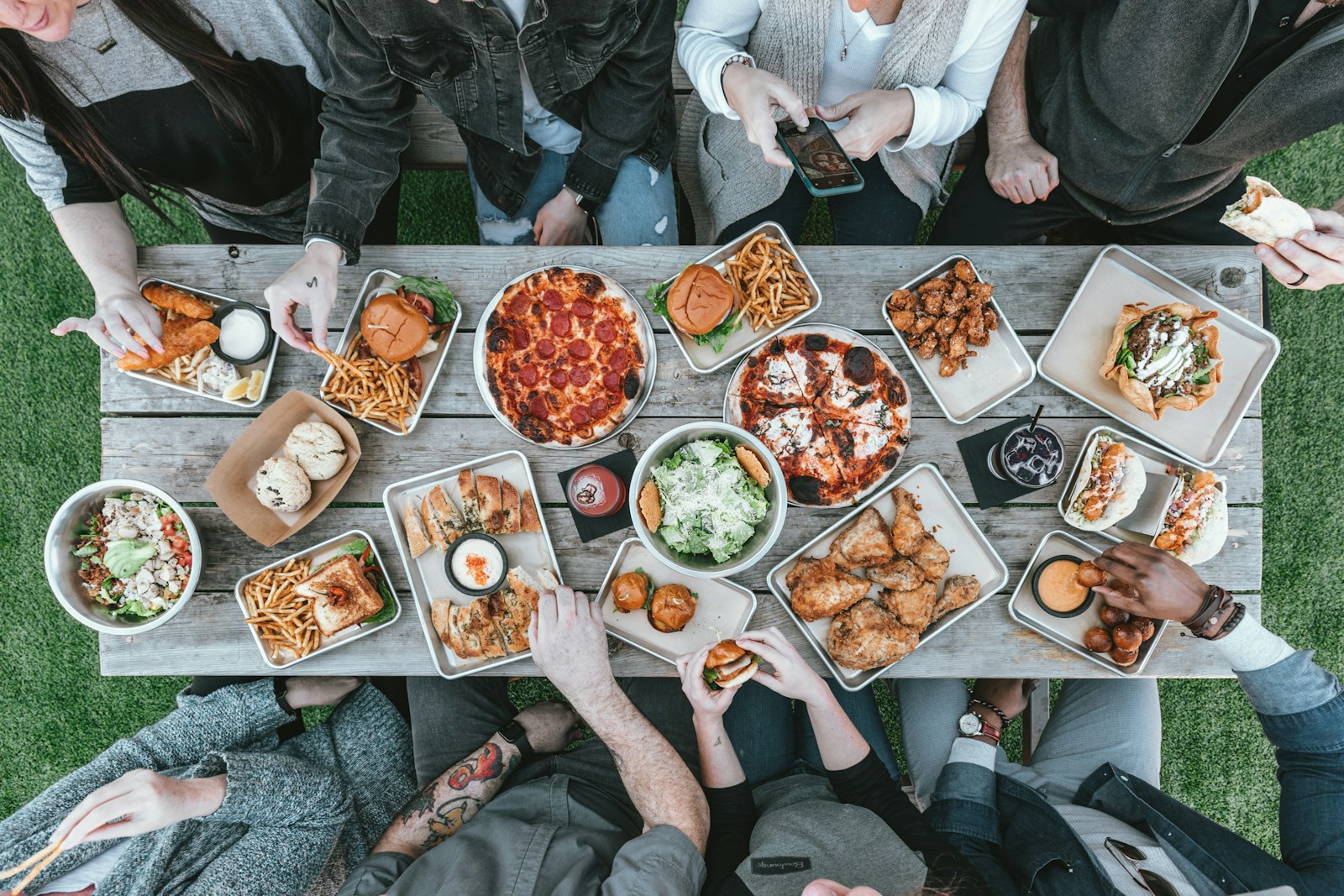TL;DR:
- Intuitive Eating Defined: Embrace natural hunger cues and shun diet culture for a healthier relationship with food.
- Starting Out: Learn to tune into your body’s hunger signals and battle external food influences through mindfulness.
- Everyday Integration: Indulge cravings guilt-free and find satisfaction in food while fostering self-compassion.
- Challenges Addressed: Combat emotional eating, navigate social pressures, and break free from the all-or-nothing mindset.
- Long-term Success: Sustain intuitive eating by seeking support, celebrating wins, and focusing on non-scale victories.
By understanding and practicing Intuitive Eating, you can transform your relationship with food and prioritize your well-being.
Introduction
Intuitive Eating lies at the heart of the profound relationship between our bodies and food. In a world where diet culture often dictates our choices, embracing intuitive eating can be a transformative journey towards holistic wellness. As we navigate the intricate connection between what we eat and how we feel, the power of intuitive eating emerges as a beacon of self-discovery and nourishment. Through simple yet profound steps, we can delve into a deeper understanding of our bodies’ needs and cultivate a harmonious relationship with food. Join me on this enlightening path as we explore the empowering steps to transform your relationship with food.
The Basics of Intuitive Eating
Have you ever felt lost in a sea of diet plans and food rules, unsure of what your body truly needs? Intuitive eating offers a refreshingly different approach to nourishing yourself. By tuning into your body’s cues and honoring your hunger and fullness signals, you can cultivate a healthier relationship with food and your body.
What is Intuitive Eating?
Intuitive eating is a mindfulness-based approach to eating that encourages you to listen to your body’s signals to guide your food choices. It emphasizes self-trust, body respect, and making peace with food. Rather than following strict meal plans or calorie counting, intuitive eating invites you to eat based on hunger, fullness, and satisfaction.
The Principles of Intuitive Eating
The core principles of intuitive eating include rejecting the diet mentality, honoring your hunger, making peace with food, and discovering satisfaction in eating. By embracing these principles, you can break free from the cycle of restrictive eating and develop a healthier, more sustainable way of nourishing yourself.
How Can Intuitive Eating Benefit Your Health?
Intuitive eating has been linked to numerous health benefits, including improved psychological well-being, enhanced body image, and a more positive relationship with food. By fostering a sense of food freedom and mindfulness around eating, intuitive eating can help you achieve a balanced and sustainable approach to nutrition.
Getting Started with Intuitive Eating
Are you tired of restrictive diets that leave you feeling deprived and disconnected from your body’s needs? Intuitive Eating could be the solution you’ve been looking for. By tuning into your body’s natural hunger cues and learning to trust your inner wisdom, you can foster a healthy relationship with food and your body. Let’s explore how you can embark on this transformative journey towards holistic wellness.
How to Listen to Your Body’s Hunger Cues
- Pay attention to physical signs of hunger, such as stomach growling or feeling lightheaded.
- Practice mindful eating by eating without distractions and savoring each bite.
- Learn to differentiate between true hunger and emotional hunger to make informed food choices.
Overcoming External Influences and Diet Culture
- Challenge societal norms and unrealistic body standards by embracing body positivity and self-acceptance.
- Reframe your mindset around food as nourishment and pleasure, rather than a source of guilt or shame.
- Surround yourself with supportive individuals who respect your journey towards intuitive eating.
The Role of Mindful Eating in Intuitive Eating
- Engage all your senses while eating to fully experience flavors, textures, and aromas.
- Slow down your eating pace to allow time for your brain to register feelings of fullness.
- Practice gratitude for the nourishment food provides, fostering a positive relationship with your meals.
Implementing Intuitive Eating in Daily Life
How to Honor Your Cravings Without Guilt
Embracing intuitive eating involves paying attention to your body’s signals, including cravings. Instead of labeling foods as “good” or “bad,” listen to what your body truly desires. Cravings are normal and serve as cues for your nutritional needs. Explore ways to satisfy your cravings mindfully, enjoying them without guilt or restriction. By honoring your cravings, you foster a healthier relationship with food, promoting balance and satisfaction in your eating habits.
Discovering Satisfaction in Food Choices
Intuitive eating is about finding satisfaction in your food choices. Focus on choosing foods that both nourish your body and bring you joy. Experiment with different flavors, textures, and cuisines to discover what truly satisfies you. When you eat foods that you enjoy and that make you feel good, you are more likely to feel content and fulfilled after meals. Embracing satisfaction in your food choices is a key aspect of intuitive eating that enhances your overall well-being.
The Importance of Self-Compassion in the Intuitive Eating Journey
Self-compassion plays a crucial role in practicing intuitive eating. Be kind to yourself throughout the process, especially when facing challenges or setbacks. Instead of criticizing yourself for not following rigid rules, show yourself compassion and understanding. Embrace the journey of intuitive eating with patience and self-love. Remember that it is okay to make mistakes and that each step towards listening to your body’s needs is a valuable progress. Self-compassion empowers you to navigate the intuitive eating journey with grace and resilience.
Overcoming Common Challenges in Intuitive Eating
As rewarding as the journey to intuitive eating can be, it is not without its challenges. Many individuals grapple with emotional eating, cope with societal pressures about food, or struggle with an all-or-nothing attitude. Building resilience against these issues is integral to fully embracing intuitive eating.
Dealing With Emotional Eating
Emotional eating can be a significant hurdle in the quest for intuitive eating. It refers to the act of using food to cope with emotional distress or discomfort. It’s essential to recognize these patterns and instead, learn to respond to emotional signals with suitable coping mechanisms. Self-awareness exercises and mindfulness activities can assist in distinguishing between physical hunger and emotional hunger.
Handling Social Situations and Peer Pressure
Family gatherings, work events, or peer group outings can lead to pressures about what and how much to eat. These external influences might sway you away from trusting your body’s signals. It’s crucial to remember that intuitive eating promotes flexibility. In such situations, it’s okay to indulge while respecting your hunger and fullness cues, rather than succumbing to social pressures.
Combating the All-or-Nothing Mentality
The all-or-nothing mentality, often linked to diet culture, presents another challenge. This mindset can lead to feelings of guilt or failure if one deviates from the ‘perfect’ eating habits. However, intuitive eating is not about perfection, but acceptance and respect for your body. Incorporating mindfulness and self-compassion can reduce this destructive thinking, fostering a healthier relationship with food.
Sustaining Your Intuitive Eating Journey
Starting your intuitive eating journey is only the first step; the real challenge lies in sustaining it for the long term. Let’s explore how you can maintain this mindful approach to food and wellness.
Practicing Intuitive Eating Long-Term
– Consistency is key: Continue to listen to your body’s signals and respond to its needs.
– Stay connected: Regularly check in with yourself to ensure you’re aligned with your intuitive eating goals.
– Flexibility is crucial: Allow for changes and adaptations as your body and preferences evolve.
Seeking Support and Accountability
– Find a like-minded community: Surround yourself with individuals who understand and support your intuitive eating journey.
– Professional guidance: Consider working with a registered dietitian or therapist specialized in intuitive eating for added support.
– Stay accountable: Keep track of your progress and setbacks, and celebrate your victories along the way.
Celebrating Progress and Non-Scale Victories
– Focus on non-scale wins: Celebrate improved energy levels, mood stability, and overall well-being.
– Reflect on your growth: Acknowledge the positive changes in your relationship with food and body image.
– Practice gratitude: Appreciate the journey and the positive impact intuitive eating has had on your life.
Transition to the conclusion allows you to firm up your commitment to intuitive eating and take your wellness journey to the next level.
Conclusion:
In a world saturated with restrictive diets and food rules, embracing intuitive eating emerges as a beacon of mental and physical wellness. The journey of reconnecting with our bodies, honoring hunger and fullness cues, and cultivating a positive relationship with food is transformative. Intuitive eating heralds a harmonious balance, nurturing both body and mind. Dive deeper into the realm of intuitive eating to unlock a profound understanding of self-care and nourishment. Let intuition guide your plate, and watch as your wellness flourishes.










